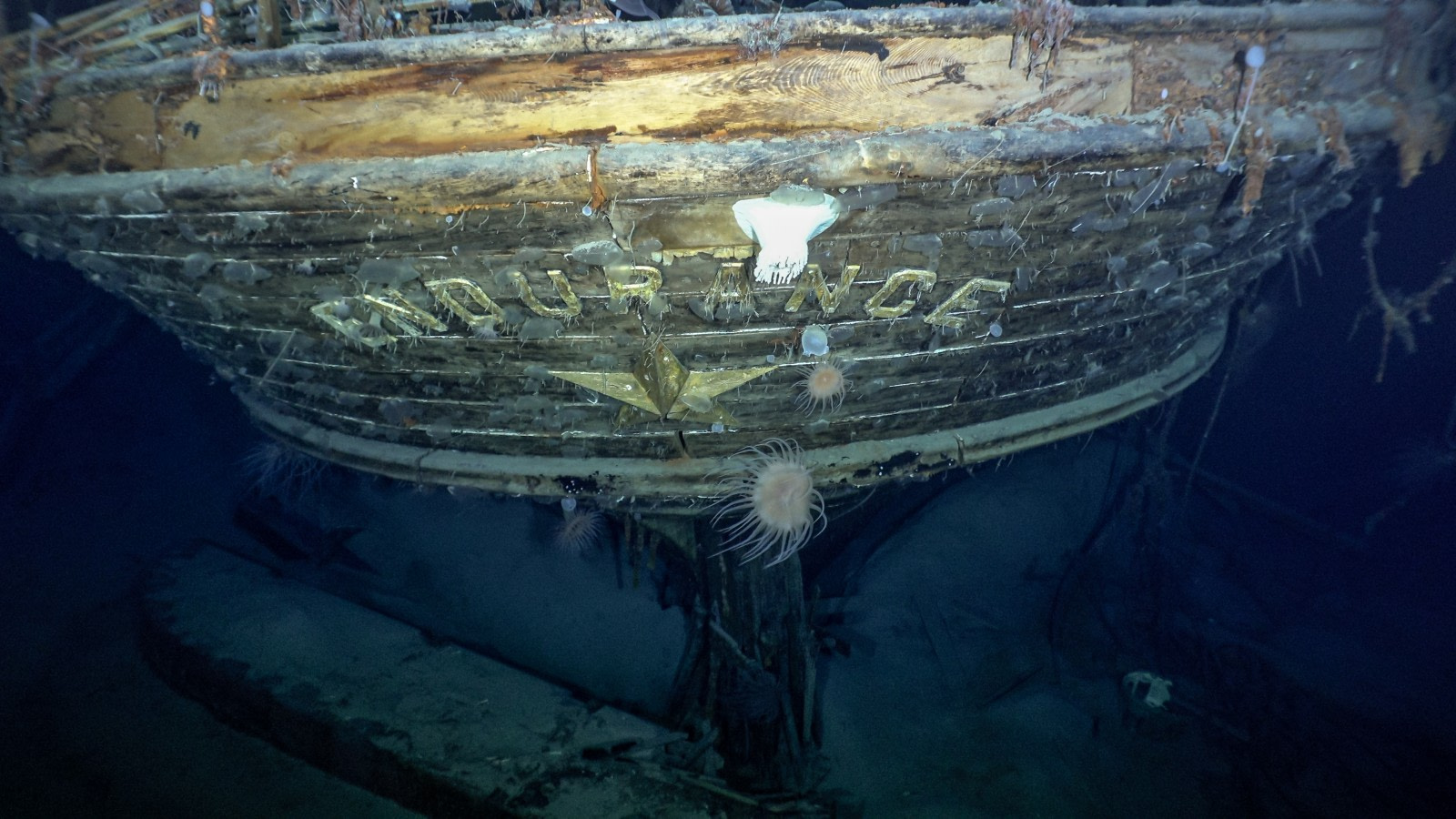Scientists find legendary explorer’s lost ship 107 years after its fateful demise
A discovery expedition launched by the Falklands Maritime Heritage Trust fulfilled a mission years in the making when it discovered Anglo-Irish explorer Ernest Shackleton’s lost ship Endurance last Saturday (March 5, 2022).
Crushed in sea ice in 1915 during the Imperial Trans-Antarctic Expedition, the vessel was found in remarkably preserved condition 3,000 meters (10,000 feet) deep on the Weddell Sea floor, not far from the southern leg of our Remote Weddell Sea Explorer route.

Header photo and above photo credits to: Falklands Maritime Heritage Trust and National Geographic
The searchers had been close to calling an end to their expedition, having covered most of their predefined search area over a period of two weeks. Then, on the 100th anniversary of Shackleton’s burial at Grytviken, South Georgia, they finally found their prize.
Video credit to: Falklands Maritime Heritage Trust
Since that momentous discovery, which mission leader John Shears said was often called impossible, the team has been using remotely operated submersibles to take photos and video of the vessel. They’ve done this from the same South African icebreaker, Agulhas II, they also used for the search.
Endurance is now a designated monument protected by the Antarctic Treaty, meaning the vessel cannot be disturbed nor any artifacts removed from it. But the search team’s photos already crisply detail the ship’s name on the stern and its five-pointed Polaris star below, which gave the ship its original name. Anchors, dishware, even boots have also been photographed.
Polar biologists think the good condition of the ship may be in part due to the absence of wood-eating sea life that tends to consume timbered vessels. These organisms are not present in the forestless region of Antarctica, though that hasn’t stopped a number of other marine animals from claiming real estate on and around the ship: sponges, sea squirts, anemones, and many other such species have happily appropriated areas once occupied by Shackleton’s indomitable crew.

The discovery of Endurance is not only made sweeter by its pristine condition, however. Any student of polar history will tell you the ship forms a centerpiece of expedition lore for its association with one of the greatest rescue stories in recorded history: Shackleton’s journey from Elephant Island to South Georgia.

After Endurance sunk in the Weddell Sea, her crew made an arduous lifeboat voyage to Elephant Island. But this was just the beginning for Shackleton and five of his men, who then sailed 1,336 km (830 miles) in one of their 6-meter (20-foot) lifeboats to South Georgia, which they reached fifteen days later in hurricane winds. Upon landing, they next had to achieve a hellish 36-hour land trek to the whaling station of Stromness before finding a rescue team for their fellows back on Elephant Island.

The end of this expedition (and not long after, Shackleton’s death) are often cited as the end of the Heroic Age of Antarctic Exploration. But the discovery of Endurance promises scientists and scholars of the period, many of whom we’re proud to call our colleagues and passengers, exciting new discoveries we look forward to learning about in the months to come.






